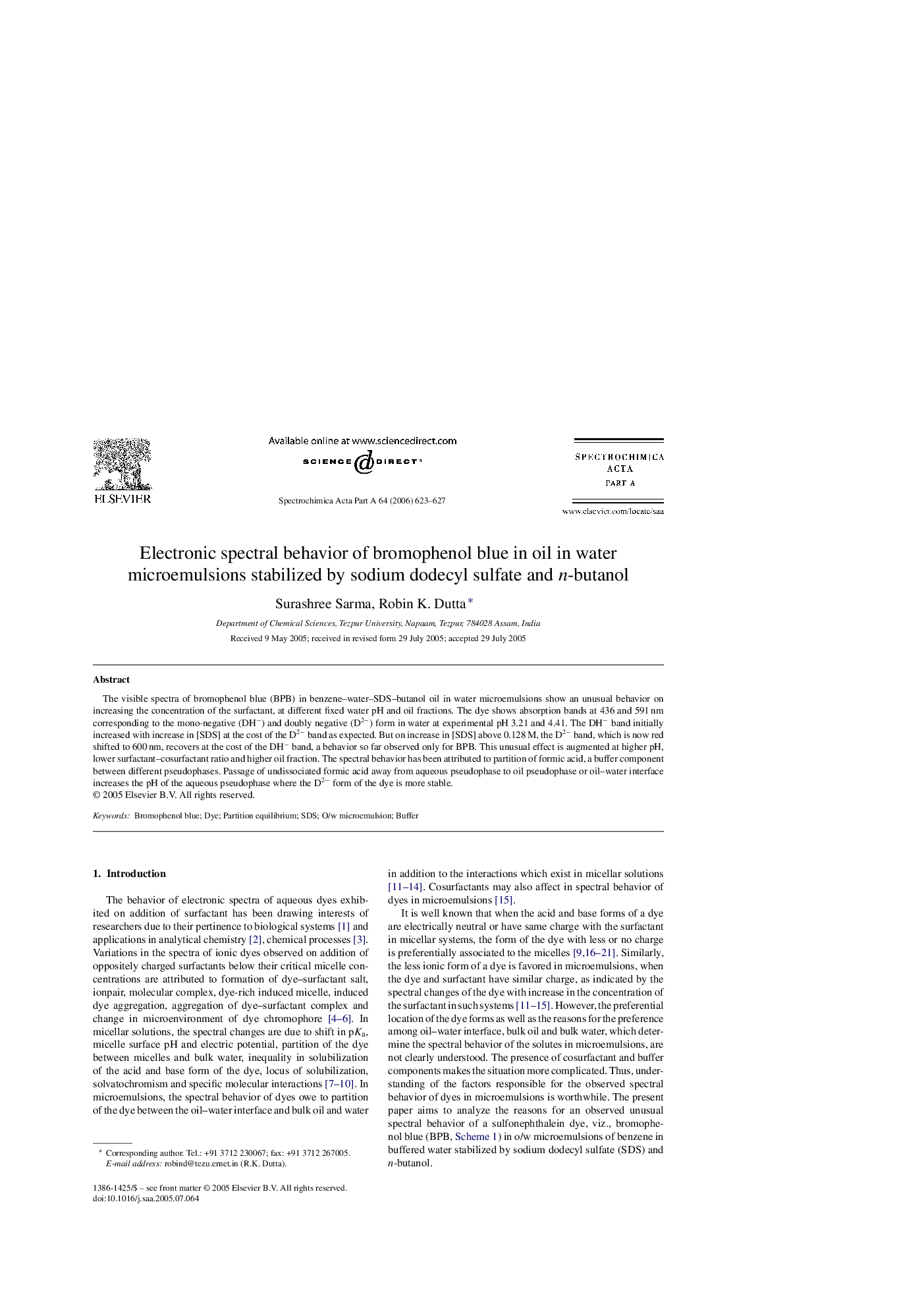| Article ID | Journal | Published Year | Pages | File Type |
|---|---|---|---|---|
| 1236422 | Spectrochimica Acta Part A: Molecular and Biomolecular Spectroscopy | 2006 | 5 Pages |
The visible spectra of bromophenol blue (BPB) in benzene–water–SDS–butanol oil in water microemulsions show an unusual behavior on increasing the concentration of the surfactant, at different fixed water pH and oil fractions. The dye shows absorption bands at 436 and 591 nm corresponding to the mono-negative (DH−) and doubly negative (D2−) form in water at experimental pH 3.21 and 4.41. The DH− band initially increased with increase in [SDS] at the cost of the D2− band as expected. But on increase in [SDS] above 0.128 M, the D2− band, which is now red shifted to 600 nm, recovers at the cost of the DH− band, a behavior so far observed only for BPB. This unusual effect is augmented at higher pH, lower surfactant–cosurfactant ratio and higher oil fraction. The spectral behavior has been attributed to partition of formic acid, a buffer component between different pseudophases. Passage of undissociated formic acid away from aqueous pseudophase to oil pseudophase or oil–water interface increases the pH of the aqueous pseudophase where the D2− form of the dye is more stable.
